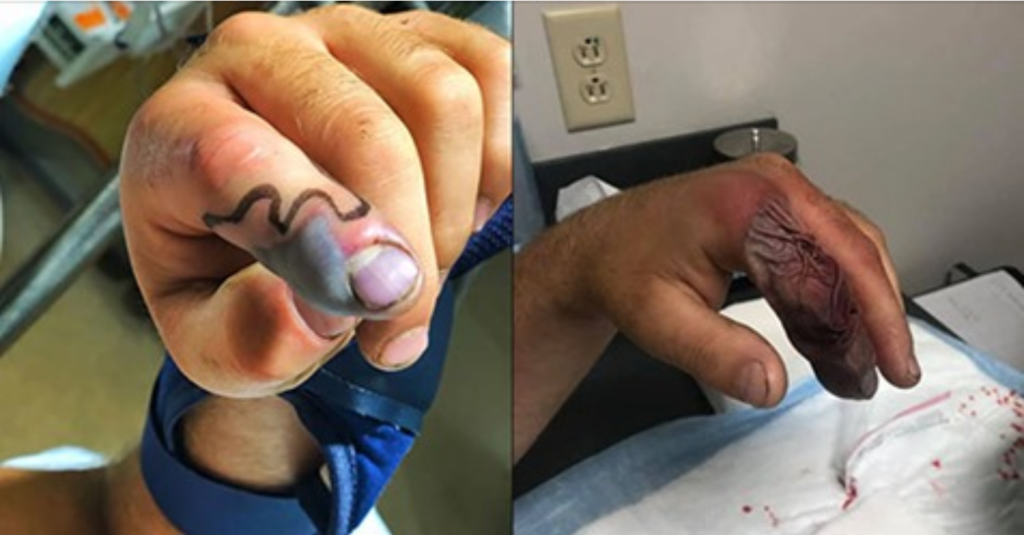The question that often arises when the word rattlesnake comes up is “what if one bites me?” The likelihood of being bitten by a rattlesnake is quite small. Timber rattlesnakes are generally very docile snakes, and typically bite as a last resort. Instead, its instincts are to avoid danger by retreating to cover,or by hiding using its camouflage coloration to blend into its surroundings. If cornered, and provoked, a timber rattlesnake may respond aggressively. It will usually rattle its tail to let you know it is getting agitated. The snake may even puff itself up to appear bigger. Upon further provocation, the snake may bluff strike, where it lunges out, but doesn’t open its mouth, or it may strike with an open mouth. Because venom is costly for a rattlesnake to produce, and you are not considered food, a snake often will not actively inject venom when it bites. In fact, nearly half of all timber rattlesnake bites to humans contain little to no venom, commonly referred to as dry or medically insignificant bites. Death due to a rattle snakebite is unlikely. Timber rattlesnake bites in are rare. Most bites result from people intentionally
handling rattlesnakes and often involve the use of alcohol or drugs. Check out this article of the progression of a Timber Rattlesnake bite.
https://thehuntingnews.com/progression-of-a-timber-rattler-bite/





